 Only one male wolf and one female wolf in each pack will mate each year.
The female gives birth from 4-7 pups, which are cared for by their parents
and other pack members, known as helpers.
Only one male wolf and one female wolf in each pack will mate each year.
The female gives birth from 4-7 pups, which are cared for by their parents
and other pack members, known as helpers.
 The moose's name comes from the natives meaning "bark eater" (but in
Europe it is called "elk"). It's antlers may spread 6.6 feet (2 meters)
across.
The moose's name comes from the natives meaning "bark eater" (but in
Europe it is called "elk"). It's antlers may spread 6.6 feet (2 meters)
across.
 The bald eagle's name came from England when bald origanally meant
"white". Also they build a large nest which can measure 2 feet accors
and 6 feet deep!
The bald eagle's name came from England when bald origanally meant
"white". Also they build a large nest which can measure 2 feet accors
and 6 feet deep!
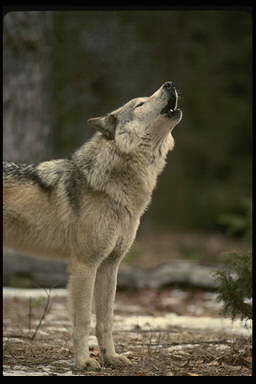
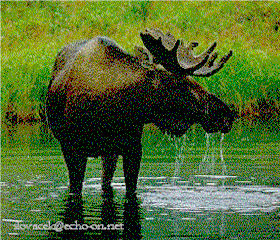

 Shrews are extremely nervous and sensitive. Their hearts may beat
1200 times per minute, and a shrew may die from the shock of a rough
touch or a loud noise.
Shrews are extremely nervous and sensitive. Their hearts may beat
1200 times per minute, and a shrew may die from the shock of a rough
touch or a loud noise.
 The whitetail deer can jump as high as 7 feet and can leap over 20 feet
if it's running.
The whitetail deer can jump as high as 7 feet and can leap over 20 feet
if it's running.


 Now scientists have considered for the panda to be included as part of
the bear family. But the koala "bear" is still part of the marsupial
family (related to kangaroos, wombats, and opossums).
Now scientists have considered for the panda to be included as part of
the bear family. But the koala "bear" is still part of the marsupial
family (related to kangaroos, wombats, and opossums).
 The puma is the largest cat in North America and is able to jump heights
of 18 feet (5.5 meters) or more
The puma is the largest cat in North America and is able to jump heights
of 18 feet (5.5 meters) or more
 The North American porcupine, may have more than 30,000 quills (each up
to 3 inches [7.5 centimeters] in length)! Porcupines cannot shoot their
quills they ONLY detach easily that can become painfully embedded in the
enemy's skin.
The North American porcupine, may have more than 30,000 quills (each up
to 3 inches [7.5 centimeters] in length)! Porcupines cannot shoot their
quills they ONLY detach easily that can become painfully embedded in the
enemy's skin.
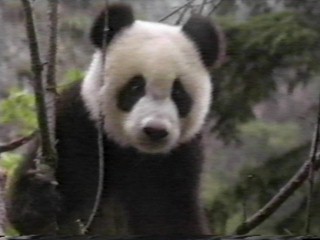
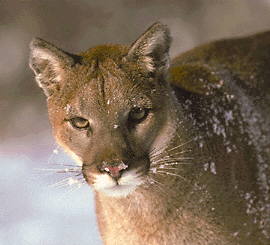
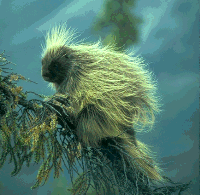
 The rusty brown eastern chipmunk has five dark and two light stripes;
the gray western, five dark and four light stripes. They have inner cheek
pouches that they can stuff with food. Chipmunks can climb and swim fairly well.
The rusty brown eastern chipmunk has five dark and two light stripes;
the gray western, five dark and four light stripes. They have inner cheek
pouches that they can stuff with food. Chipmunks can climb and swim fairly well.
 The grizzly bear, is the fiercest animal in North America. It is
strong enough to carry off small horses and cattle.
The grizzly bear, is the fiercest animal in North America. It is
strong enough to carry off small horses and cattle.

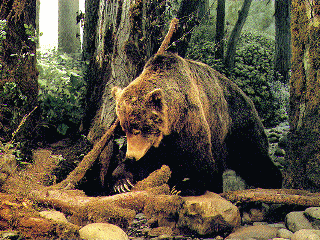

 Here is some facts about land and soil pollution
Here is some facts about land and soil pollution

 In order to sustain the continually growing human population,
current agricultural methods are designed to maximize yields from
croplands. In many areas, the overuse of land results in the erosion
of topsoil. This soil erosion, in turn, causes the over-silting or
sedimentation of rivers and streams.
In order to sustain the continually growing human population,
current agricultural methods are designed to maximize yields from
croplands. In many areas, the overuse of land results in the erosion
of topsoil. This soil erosion, in turn, causes the over-silting or
sedimentation of rivers and streams.
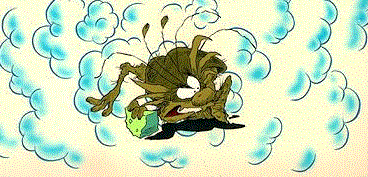
 One of the most hazardous forms of pollution comes from agricultural
pesticides. These chemicals are designed to
kill insects, weeds, fungi, or rodents that pose a threat to crops.
When airborne pesticides drift with the wind or become absorbed into
the fruits and vegetables they are meant to protect, they can become a
source of many illnesses, including cancer and birth defects.
Pesticides are often designed to withstand rain, which means they
are not always water-soluble, and therefore they may persist in the
environment for long periods of time. Some pests have developed a
genetic resistance to these chemicals, forcing farmers to increase the
amounts or types of pesticide.
Still thousands of pesticides
remain in use and, in some cases, their agricultural value may balance
out their risks.
One of the most hazardous forms of pollution comes from agricultural
pesticides. These chemicals are designed to
kill insects, weeds, fungi, or rodents that pose a threat to crops.
When airborne pesticides drift with the wind or become absorbed into
the fruits and vegetables they are meant to protect, they can become a
source of many illnesses, including cancer and birth defects.
Pesticides are often designed to withstand rain, which means they
are not always water-soluble, and therefore they may persist in the
environment for long periods of time. Some pests have developed a
genetic resistance to these chemicals, forcing farmers to increase the
amounts or types of pesticide.
Still thousands of pesticides
remain in use and, in some cases, their agricultural value may balance
out their risks.


 Some urban areas are beginning to experience a serious problem
regarding the disposal of garbage and hazardous wastes, such as
solvents and industrial dyes and inks. In many areas landfill sites are
approaching their full capacity and many municipalities are turning to
incineration as a solution. Giant high-temperature incinerators have
become another source of air pollution, however, because incineration
ashes sometimes contain very high concentrations of metals as well as
dioxins, a dangerous family of chemical poisons.
Some urban areas are beginning to experience a serious problem
regarding the disposal of garbage and hazardous wastes, such as
solvents and industrial dyes and inks. In many areas landfill sites are
approaching their full capacity and many municipalities are turning to
incineration as a solution. Giant high-temperature incinerators have
become another source of air pollution, however, because incineration
ashes sometimes contain very high concentrations of metals as well as
dioxins, a dangerous family of chemical poisons.
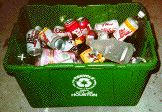
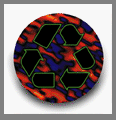
 One answer to the garbage problem is recycling. Some
towns have passed ordinances that encourage or require residents to
separate glass and aluminum cans and bottles from other refuse so that
these substances can be melted down and reused. Although lightweight
steel, cardboard, and paper are also economically recyclable, most
industries and cities still burn or bury large amounts of scrap metal
and paper products every day.
One answer to the garbage problem is recycling. Some
towns have passed ordinances that encourage or require residents to
separate glass and aluminum cans and bottles from other refuse so that
these substances can be melted down and reused. Although lightweight
steel, cardboard, and paper are also economically recyclable, most
industries and cities still burn or bury large amounts of scrap metal
and paper products every day.

 Here is some info on Carnivores, Herbivores, Omnivores, and Insectivores
and who they are.
Here is some info on Carnivores, Herbivores, Omnivores, and Insectivores
and who they are.
 Animals that eat other animals are called carnivores.
Many mammals are carnivores. They all have special kinds of teeth for
tearing their food into chunks and chewing it.
Most of them have claws for catching and holding their prey. Among the
carnivores are cats, dogs, weasels, bears (some are omnivorous),
hyenas, civet cats, and seals. Some fish subsist on plant and animal life known
as plankton. The baleen whale is an enormous animal. It feeds upon shrimplike
creatures only about 1 inch in length. When it finds a school of shrimp, it
opens its mouth and gulps in several barrelfuls of water. Horny strainers that
hang from the roof of its mouth catch the shrimp and drain out the water.
Animals that eat other animals are called carnivores.
Many mammals are carnivores. They all have special kinds of teeth for
tearing their food into chunks and chewing it.
Most of them have claws for catching and holding their prey. Among the
carnivores are cats, dogs, weasels, bears (some are omnivorous),
hyenas, civet cats, and seals. Some fish subsist on plant and animal life known
as plankton. The baleen whale is an enormous animal. It feeds upon shrimplike
creatures only about 1 inch in length. When it finds a school of shrimp, it
opens its mouth and gulps in several barrelfuls of water. Horny strainers that
hang from the roof of its mouth catch the shrimp and drain out the water.


 A large group of animals are plant eaters (herbivores). Many
herbivores are prey of the carnivores. Insects are the dominant
herbivores in most parts of the world, although they may be less
conspicuous than plant-eating mammals and birds. Herbivorous mammals
include horses, cattle, sheep, goats, rabbits, rodents, elephants,
deer and antelope.
A large group of animals are plant eaters (herbivores). Many
herbivores are prey of the carnivores. Insects are the dominant
herbivores in most parts of the world, although they may be less
conspicuous than plant-eating mammals and birds. Herbivorous mammals
include horses, cattle, sheep, goats, rabbits, rodents, elephants,
deer and antelope.


 Also there are a few mammals that are omnivores. They are mammals which
eat some meat and some plant life. Although unlike herbivores, they are
NOT always prey of the carnivores. Omnivorous mammals include mainly
humans, monkeys and apes, wildboars and pigs, skunks, and raccoons.
Also there are a few mammals that are omnivores. They are mammals which
eat some meat and some plant life. Although unlike herbivores, they are
NOT always prey of the carnivores. Omnivorous mammals include mainly
humans, monkeys and apes, wildboars and pigs, skunks, and raccoons.


 A few mammals live on insects moles, shrews, and hedgehogs, bats,
armadillos, aardvarks, and anteaters. Many bird species are insect
eaters, as are certain kinds of insects, such as ladybugs.
A few mammals live on insects moles, shrews, and hedgehogs, bats,
armadillos, aardvarks, and anteaters. Many bird species are insect
eaters, as are certain kinds of insects, such as ladybugs.





 [Human Impact]....[Home]....[WaterWorld]
[Human Impact]....[Home]....[WaterWorld]

 slovacek@echo-on.net
slovacek@echo-on.net

 Last Updated 22/11/97
Last Updated 22/11/97 